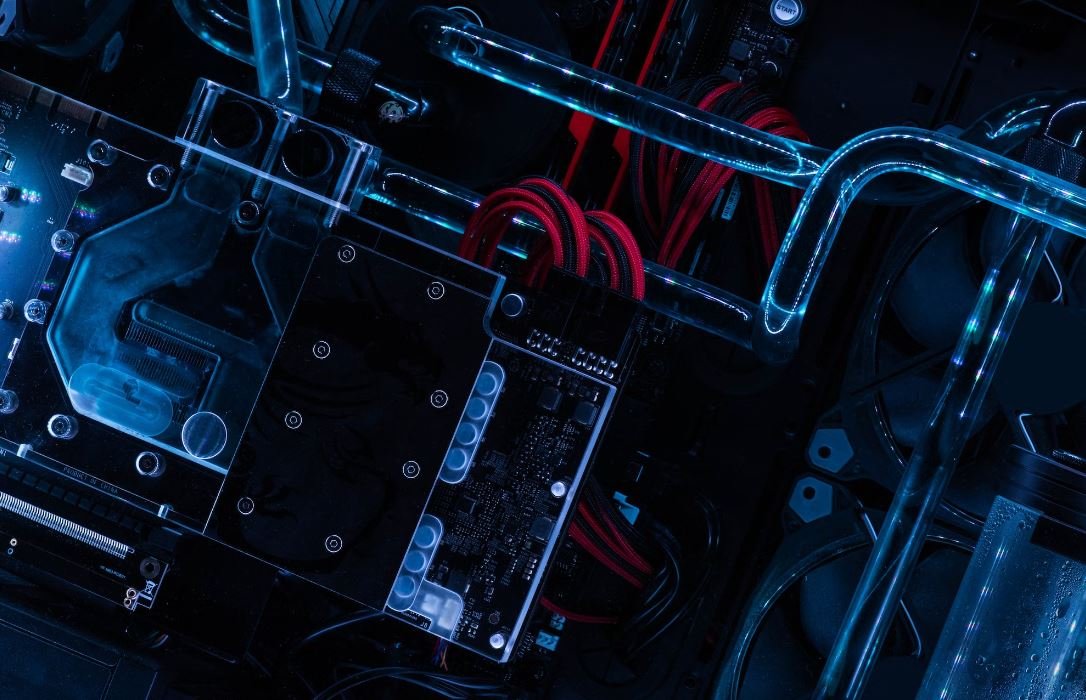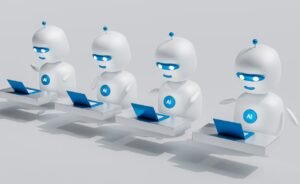Artificial Intelligence in Production
Artificial Intelligence (AI) has revolutionized various industries, and its impact on production processes cannot be ignored. From automated quality control to predictive maintenance, AI has the potential to streamline operations, increase efficiency, and optimize decision-making in production environments.
Key Takeaways:
- AI in production enables automated quality control and predictive maintenance.
- It enhances efficiency by optimizing production planning and resource allocation.
- Machine learning algorithms in AI can detect anomalies and reduce downtime.
- AI-powered robots and cobots improve productivity and safety in production.
- Implementing AI in production requires proper data collection and analysis.
In today’s fast-paced production environment, AI technology offers immense potential for companies to gain a competitive edge. With the ability to process large amounts of data quickly, AI systems can detect patterns, make predictions, and enable real-time decision-making to improve overall production efficiency.
One of the key benefits of AI in production is automated quality control. *Machine learning algorithms* can analyze data from various sources, such as sensors and cameras, to identify defects or deviations from desired quality standards. This automated approach eliminates the need for manual inspection, reducing the potential for human error and increasing the accuracy of quality control processes.
Streamlining Production Planning
*Optimizing production planning* is another area where AI can significantly contribute. By analyzing historical data, market trends, and other relevant factors, AI algorithms can help determine the most efficient production schedule and resource allocation. This ensures that production processes are optimized to meet demand while minimizing waste and reducing costs.
A fascinating aspect of AI in production is its ability to proactively address equipment failures through *predictive maintenance*. Machine learning models can analyze sensor data from production machinery to detect patterns indicative of potential failures. By predicting maintenance needs in advance, companies can prevent costly breakdowns, reduce downtime, and optimize maintenance schedules.
Data-Driven Decision Making
AI in production enables data-driven decision making, which helps companies stay agile and responsive to changing market conditions. By leveraging machine learning algorithms, companies can analyze vast amounts of production data and gain valuable insights to optimize their processes. This data-driven approach enables companies to make real-time adjustments, leading to improved efficiency and productivity.
Table 1: Applications of AI in Production
| Application | Description |
|---|---|
| Automated Quality Control | AI algorithms analyze data from sensors and cameras to identify defects or deviations from quality standards. |
| Predictive Maintenance | Machine learning models predict maintenance needs by analyzing sensor data, reducing downtime and optimizing maintenance schedules. |
| Production Planning Optimization | AI algorithms use historical data and market trends to determine the most efficient production schedule and resource allocation. |
| Real-time Decision Making | Data-driven decision making using AI enables companies to make real-time adjustments and improve efficiency. |
| Productivity and Safety Enhancement | AI-powered robots and cobots improve productivity and ensure safer production environments. |
AI also plays a crucial role in detecting anomalies and reducing downtime. Machine learning algorithms can continuously monitor production processes, analyzing data in real-time to identify any abnormalities. Early detection of anomalies allows for timely intervention, reducing the impact on production and preventing potential disruptions.
Table 2: Benefits of AI in Production
| Benefits | Description |
|---|---|
| Automated Quality Control | Eliminates the need for manual inspection and improves accuracy in identifying defects or deviations. |
| Predictive Maintenance | Prevents costly breakdowns, reduces downtime, and optimizes maintenance schedules. |
| Efficient Resource Allocation | Optimizes production planning, ensuring efficient resource allocation and minimizing waste. |
| Anomaly Detection | Real-time monitoring of production processes helps detect anomalies and prevent disruptions. |
| Improved Decision Making | Data-driven decision making enhances agility and responsiveness to changing market conditions. |
Furthermore, the integration of AI-powered robots and cobots (collaborative robots) in production can greatly enhance productivity and safety. These robots can perform repetitive tasks with precision, speed, and consistency, allowing human workers to focus on more complex and value-added activities. Additionally, cobots can work alongside humans, ensuring a safer production environment by assisting in physically demanding or dangerous tasks.
Conclusion
Artificial intelligence is the future of production, offering a wide range of benefits from automated quality control to predictive maintenance. By leveraging AI algorithms and machine learning models, companies can optimize their production processes, improve decision-making, and enhance overall efficiency. Embracing AI in production is no longer a luxury but a necessity for businesses striving to stay competitive in today’s rapidly evolving markets.
Remember, with AI, the possibilities in production are endless.

Common Misconceptions
1. AI is capable of human-level intelligence:
One of the most common misconceptions about artificial intelligence is that it possesses human-like capabilities in terms of intelligence and understanding. However, AI systems are specifically designed to perform tasks that are difficult or impossible for humans to accomplish efficiently. They lack the complex cognitive abilities and general intelligence that humans possess.
- AI algorithms require extensive training and specific data sets.
- AI systems excel in narrow fields and specific tasks.
- Human intelligence encompasses a range of cognitive abilities that AI cannot replicate.
2. AI will take over human jobs completely:
Another common misconception is that AI will completely replace humans in the workforce, leading to widespread unemployment. While AI technologies are transforming various industries by automating repetitive and mundane tasks, they also create new opportunities and roles for humans. AI is mainly designed to enhance human abilities and productivity rather than eliminating jobs entirely.
- AI can free up humans from repetitive tasks and allow them to focus on more complex and creative work.
- AI often requires human supervision and intervention for decision making and quality control.
- New job roles are emerging in AI-related fields, such as AI trainers, data scientists, and AI ethicists.
3. AI is infallible and unbiased:
Contrary to popular belief, AI systems are not infallible or completely unbiased. They are developed based on algorithms and data sets created by humans, which can introduce biases and inaccuracies into the AI decision-making process. AI systems can amplify human biases and discrimination if not properly trained or monitored.
- AI algorithms need continuous monitoring and evaluation to identify and mitigate biases.
- Datasets used for training AI systems need to be diverse and representative of different demographics.
- AI systems may produce incorrect or unfair results if not rigorously tested and validated.
4. AI is indistinguishable from human intelligence:
Although AI has made significant advancements in recent years, it is still far from replicating human intelligence in its entirety. While AI excels in specific tasks like image recognition or natural language processing, it lacks the broader understanding, intuition, and creativity that humans possess.
- AI systems can outperform humans in specific domains, but they lack the overall cognitive abilities that humans possess.
- AI lacks consciousness and emotions, which are fundamental aspects of human intelligence.
- Human intelligence is adaptable and can easily generalize knowledge to new situations, while AI systems require specific training.
5. AI will dominate and control humanity:
The idea that AI will dominate and control humanity, as often portrayed in science fiction movies, is a common misconception. While AI technologies have the potential to impact various aspects of our lives, they are ultimately tools that are designed, developed, and controlled by humans.
- AI is ultimately dependent on human instruction, supervision, and oversight.
- AI systems are designed to serve humans and enhance their capabilities, rather than ruling over them.
- Ethical considerations and regulations are being developed to ensure the responsible use of AI technologies.

Advances in AI Technology
The following table showcases the year of the major breakthroughs and advancements in artificial intelligence technology.
| Year | Technological Advancement |
|---|---|
| 1956 | Creation of the first computer program capable of playing chess |
| 1997 | IBM’s Deep Blue defeats world chess champion Garry Kasparov |
| 2011 | IBM’s Watson wins against human champions in the Jeopardy! quiz show |
| 2014 | Google’s DeepMind develops an AI system that learns how to play Atari games |
| 2016 | AlphaGo, an AI developed by DeepMind, defeats world champion Lee Sedol in the game of Go |
| 2018 | OpenAI’s GPT (Generative Pre-trained Transformer) shows remarkable language generation capabilities |
AI in Healthcare
This table represents the impact of artificial intelligence in healthcare, including improved diagnostics, personalized treatments, and data analysis.
| Application | Benefits |
|---|---|
| Medical Imaging | Enhanced accuracy in identifying abnormalities from X-rays, CT scans, and MRIs |
| Drug Discovery | Accelerated development of new medications and identification of potential drug candidates |
| Robot-Assisted Surgery | Precision and minimally invasive procedures, shorter recovery time for patients |
| Patient Monitoring | Real-time analysis of vital signs, early detection of deteriorations, and proactive care |
| Disease Diagnosis | Accurate identification of diseases based on symptoms and personal medical history |
AI in Manufacturing
This table demonstrates the integration of artificial intelligence in various manufacturing processes, leading to improved efficiency and productivity.
| Application | Impact |
|---|---|
| Quality Control | Reduction in defects with AI-powered automated inspection systems |
| Predictive Maintenance | Early detection of equipment issues, minimizing downtime and optimizing maintenance schedules |
| Supply Chain Management | Optimized inventory management, demand forecasting, and intelligent logistics |
| Process Automation | Streamlined production workflows, reducing human error and increasing throughput |
| Robotic Assembly | Efficient assembly line operations, higher precision, and increased production speed |
AI in Transportation
This table highlights the integration of artificial intelligence in transportation, revolutionizing autonomous vehicles and traffic management systems.
| Application | Benefits |
|---|---|
| Autonomous Vehicles | Enhanced road safety, reduced accidents, and optimized traffic flow |
| Smart Traffic Management | Real-time traffic analysis, congestion prediction, and dynamic route optimization |
| Ride-Hailing Services | Efficient matching algorithms for drivers and passengers, reduced wait times |
| Logistics and Delivery | Optimized route planning, efficient last-mile delivery, and reduced delivery times |
| Infrastructure Maintenance | Automated inspection and maintenance of roads, bridges, and transport systems |
AI in Finance
This table showcases the impact of artificial intelligence in the finance industry, including fraud detection, trading strategies, and customer experience.
| Application | Advantages |
|---|---|
| Fraud Detection | Improved accuracy in identifying fraudulent transactions, reducing losses |
| Algorithmic Trading | Automated trading strategies based on real-time market analysis, increased efficiency |
| Personalized Financial Advice | Customized investment recommendations tailored to individual preferences and goals |
| Risk Assessment | AI-powered models for evaluating creditworthiness, predicting market trends, and managing risks |
| Chatbots and Virtual Assistants | 24/7 customer support, quick responses, and personalized assistance |
AI in Education
This table demonstrates the utilization of artificial intelligence in the field of education, benefiting students and teachers alike.
| Application | Impacts |
|---|---|
| Smart Content | Personalized learning materials tailored to the student’s pace and knowledge level |
| Intelligent Tutoring Systems | Individualized guidance, feedback, and assessment for students |
| Automated Grading | Efficient evaluation of assignments, quizzes, and exams, saving teacher’s time |
| Language Learning | Real-time pronunciation correction, vocabulary practice, and interactive language exercises |
| Educational Analytics | Data-driven insights for educators to improve teaching strategies and student outcomes |
AI in Agriculture
This table showcases the integration of artificial intelligence in agriculture, leading to increased crop yields and sustainable farming practices.
| Application | Benefits |
|---|---|
| Crop Monitoring | Early detection of crop diseases, improved irrigation, and personalized care for plants |
| Precision Farming | Optimized use of resources, accurate fertilization, and targeted pest control |
| Weather Forecasting | Accurate predictions for better planning, harvesting, and protection against extreme weather |
| Livestock Monitoring | Real-time animal health monitoring and behavior analysis for improved animal welfare |
| Automated Harvesting | Efficient harvesting processes, reduced labor costs, and optimized yield |
AI in Customer Service
This table demonstrates the integration of artificial intelligence in customer service, enhancing response times and customer satisfaction.
| Application | Impact |
|---|---|
| Chatbots | Instant responses to customer inquiries, 24/7 availability, and reduced customer wait times |
| Natural Language Processing | Understanding and interpreting customer requests, generating accurate responses |
| Sentiment Analysis | Identification of customer sentiments, enabling personalized and empathetic interactions |
| Virtual Assistants | Proactive assistance, personalized recommendations, and seamless customer experience |
| Customer Analytics | Data-driven insights to understand customer behavior, preferences, and needs |
AI Ethics and Governance
This table explores the ethical considerations and governance framework required for effectively managing artificial intelligence.
| Consideration | Key Aspects |
|---|---|
| Privacy | Responsible data handling, ensuring consent, and protecting personal information |
| Transparency | Clear disclosure of AI systems’ capabilities and limitations, avoiding black box algorithms |
| Fairness | Eliminating biases in AI algorithms, addressing discrimination and promoting equal opportunities |
| Accountability | Establishing liability frameworks, ensuring human oversight and responsibility for AI systems |
| Social Impact | Considering the broader societal consequences of AI adoption and mitigating potential harm |
Artificial intelligence has made remarkable strides in various industries, revolutionizing production and enhancing efficiency. From healthcare and manufacturing to transportation and finance, AI has enabled leaps in technology and improved customer experiences. However, it is crucial to address the ethical considerations and implement sound governance frameworks to ensure responsible and beneficial AI integration. As we continue to explore the vast potential of artificial intelligence, it is essential to strike a balance that harnesses its power while safeguarding human values and societal well-being.
Frequently Asked Questions
What is artificial intelligence?
Artificial intelligence (AI) is a branch of computer science that focuses on the development of intelligent machines that can perform tasks that typically require human intelligence. AI encompasses various subfields such as machine learning, natural language processing, and computer vision.
How is artificial intelligence used in production?
AI is utilized in production to enhance productivity, improve efficiency, and optimize processes. It can automate repetitive tasks, analyze large amounts of data to identify patterns and insights, and enable predictive maintenance. AI can be integrated into various production systems such as robotics, quality control systems, and supply chain management.
What are the benefits of implementing artificial intelligence in production?
Implementing AI in production offers numerous benefits, including reduced costs, improved product quality, increased production efficiency, and enhanced worker safety. AI-powered systems are capable of real-time monitoring, predictive analysis, and autonomous decision-making, leading to better overall performance and sustainability.
What are some examples of artificial intelligence applications in production?
Examples of AI applications in production include autonomous robots and drones for assembly and logistics, machine vision systems for quality control, predictive maintenance systems for equipment, and AI-powered analytics for demand forecasting and inventory management.
How is machine learning used in artificial intelligence?
Machine learning is a key component of artificial intelligence that focuses on providing the ability for systems to automatically learn and improve from experience without being explicitly programmed. Machine learning algorithms enable AI systems to analyze data, recognize patterns, make predictions, and make autonomous decisions.
What challenges are associated with implementing artificial intelligence in production?
Some challenges of implementing AI in production include the complexity of integrating AI systems with existing infrastructure, the need for large high-quality training datasets, potential biases in AI algorithms, data security and privacy concerns, and the job displacement potential of automation. Additionally, ensuring transparency, ethical use, and explainability of AI systems are important considerations.
What are some ethical considerations with artificial intelligence in production?
Ethical considerations related to AI in production include issues such as discrimination and bias in decision-making, data privacy and security, transparency and explainability of AI algorithms, and the potential for job displacement. It is crucial to develop and adhere to ethical frameworks and regulations to ensure responsible and fair use of AI in production environments.
How can artificial intelligence help in improving product quality?
AI can improve product quality by analyzing data from various sources, such as sensors and production line cameras, to detect defects, anomalies, or deviations from quality standards. It can provide real-time feedback, enabling timely interventions and adjustments to ensure consistent quality throughout the production process.
Can artificial intelligence replace human workers in production?
While AI has the potential to automate certain tasks and reduce manual labor, it is unlikely to completely replace human workers in production. AI systems are more likely to augment human capabilities by handling repetitive or dangerous tasks, performing complex data analysis, and providing decision support. Human workers will still play a crucial role in managing and maintaining AI systems, as well as performing tasks that require creativity, critical thinking, and adaptability.
What are the future prospects of artificial intelligence in production?
The future prospects of artificial intelligence in production are vast. AI is expected to continue advancing and being integrated into a wide range of production processes and systems. This includes further development of robotics, automation, predictive maintenance, and advanced analytics. The ongoing research and innovation in AI are likely to revolutionize production industries, leading to increased efficiency, sustainability, and competitiveness.




